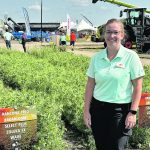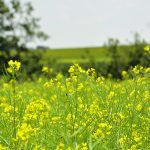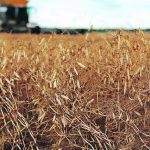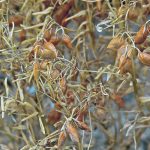Southeast Asia is an important growth market and could become a processing hub for Canadian food ingredients
WINNIPEG — Canada may need a partner in southeast Asia to tap into booming demand for food, ingredients and protein in that region. Singapore is one option, says the head of Protein Industries Canada. A delegation from Singapore visited Canada this summer and met with Protein Industries Canada, a group trying to make this country […] Read morePulses

Harvest Grain buys Sask. assets

Tank mix boosts aphanomyces seed treatment
Adding UPL’s Belmont as a tank mix to Rancona Trio increases the product’s effectiveness from suppression to control
Glacier FarmMedia – Farmers have another weapon in their arsenal to combat aphanomyces root rot. It’s been two years since UPL’s Rancona Trio was registered for early season suppression of aphanomyces in lentils and peas, but its product Belmont is now registered as a tank mix option for the Rancona Trio. It provides early season […] Read more
New uses for pulse starch seen on the horizon
Protein is normally the focus of pulse production, but research shows value can also be gained from the starch byproduct
Researchers at the University of Saskatchewan are seeking new uses for pulse starches in the food and biomaterial sectors. Byproduct market research aims to reduce food waste, increase efficiency and add more value to crops grown on the Prairies. While protein is often the goal for pulse crops in Western Canada, starch makes up more […] Read more
Canada moves to end disputes at ports of Vancouver and Montreal

Indian importers say trade disruptions not expected
Traders say India continues to buy Canadian lentils, potash despite rising diplomatic tensions between the two countries
NEW DELHI, India (Reuters) — Indian buyers do not expect supplies of Canadian lentils and potash to be affected by the diplomatic row between New Delhi and Ottawa, trade, industry and government officials said. Lentils and potash supplies from Canada have been steady, they said. Ties between India and Canada deteriorated sharply after New Delhi […] Read more
Website launched to fight pulse root rot

Booming Chinese demand drives canola exports
The country is thought to be buying so much canola this year due to its poorer crop and higher palm oil futures prices
The Canadian grain and oilseed sector continues to have an overreliance on Chinese exports, which was illustrated by the Canadian Grain Commission’s August report on exports of Canadian grain and wheat flour. China imported 796,900 tonnes of grain, oilseeds and pulses during the month, which is the highest level in more than 10 years. This […] Read more
Indian monsoon delivers
Good rain bodes well for pigeon pea crop, which may hurt demand for lentils
SASKATOON — India’s Southwest Monsoon really delivered this year. Seasonal cumulative rainfall for the June 1 through Sept. 30 period was eight per cent above the 50-year average, according to the India Meteorological Department. Central India received 19 per cent more than normal, while the South Peninsula was 14 per cent above average. The country […] Read more
U.S. researchers confirm no-till, pulse benefits
U.S. Department of Agriculture study finds that a no-till wheat and pea rotation is the most environmentally sustainable
WINNIPEG — American scientists have confirmed what Canadian farmers already know — zero tillage is good for the environment and for crop production. U.S. Department of Agriculture researchers looked at the long-term effects of three cropping rotations in Montana — summer fallow-wheat, no-till continuous wheat and no-till wheat-pea. After crunching the data, they concluded that […] Read more



